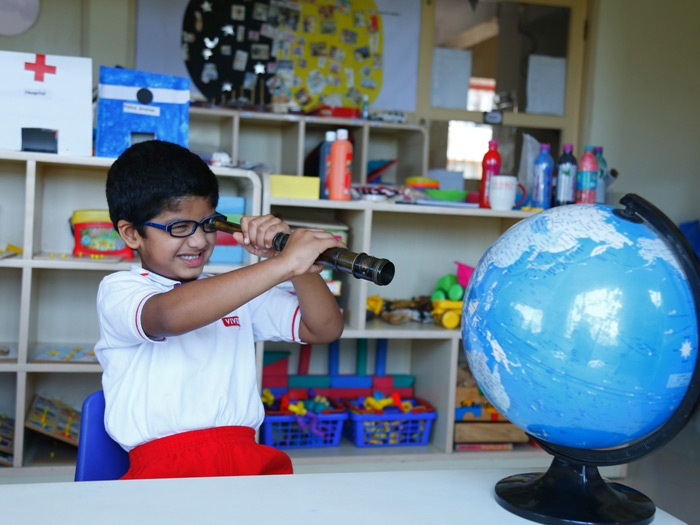- Call/Whatsapp: +91-9372801276
- Mail us: info@viverointernational.com
As children move from preschool to primary school, things do get more formal, more structured, and more demanding. Most children are easily able to navigate the changes but for some it can be quite daunting. A ‘successful transition’ enables children to adapt to new settings positively and defines the tone and direction of a child’s school career. The handling of this significant juncture may have a lasting influence on not only how children view themselves but also on how others value them along with their sense of well-being and the ability to learn.
Parents need to be patient and understand that this is a sensitive phase and may take few weeks to settle down. The more you support your child’s transition at home, the happier your first-grader will be while moving ahead!

In place of the soothing familiarity of the preschool, the classroom set up may be different. The washroom & snack room may no longer be next to the classroom anymore. Taking a tour or talking about it will help reduce anxiety when entering the new environment.
While Preschools support play based learning environment; Grade 1 comes along with fixed seating arrangements & structured sessions for extended periods of time. It now involves a lot more paper / pencil work and less moving around the classroom. Some learners may feel ‘restricted’ and develop ‘resentment’. New routines including entrance & exit and break/snack time are introduced in the first few weeks of school itself.
As parents, prepare yourself first by incorporating some more structure into your child’s day at home and discuss the same with them well in advance.
Children’ rights: Schools should care for the child’s well-being and development by providing an environment where rights are protected while ensuring that young people understand this at all times.
Culture and Environment: The Philosophy, vision and mission of the school should be positive and credible. The way teachers and staff members interact and conduct; should promote the child’s ability to learn and grow. The environment should be stimulating and support active learning.
Curriculum: While parents have the freedom to opt for a curriculum of their choice, it is important to keep in mind that the child entering the primary school today will be preparing to face the world 10-15 years hereafter along with the challenges that may exist then.
Communication: Schools should be equipped & open to opportunities for parent and family involvement. Check on how & to what extent communication between home and the school is encouraged.
